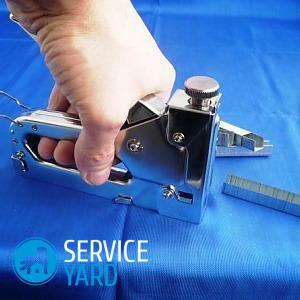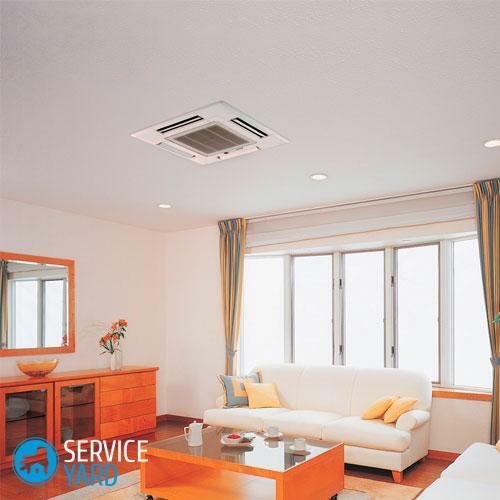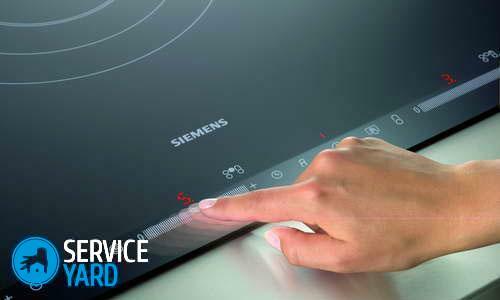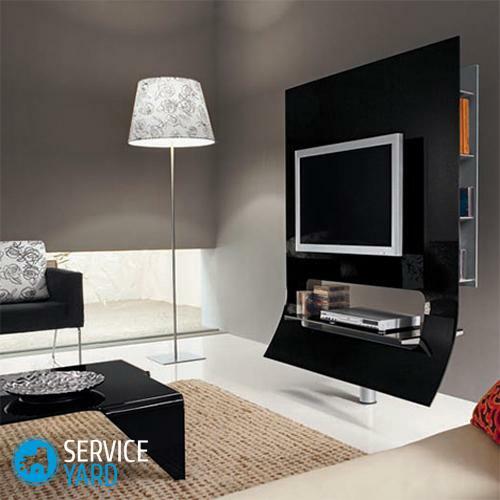
- Application areas of
- construction stapler Advantages of
- tool Types of
- staplers Mechanical stapler - inexpensive classics
- Electric stapler - fast, reliable, but more expensive
- Pneumatic stapler
- Which stapler is better?
- Striking strength
- Useful advices:
Today we will talk about a very simple but extremely necessary and interesting tool. And although he has a very narrow specialization, but at the same time performs a "1001" operation. This tool is durable and functional, and when striking, it creates. We hope that you have guessed what you are talking about, of course - it's a stapler. When you need to fix a bundle of paper, we use a stationery stapler, and if you need to fasten the carpet to the floor quickly or to pull the furniture, then the construction stapler comes into play, otherwise, the taker. How to choose the furniture stapler most suitable for a particular task, we will discuss further.
to the contents ↑Areas of application for the construction stapler
The stapler has been developing its history since the 18th century. For the first time this tool was used in France for clogging staples. And in the 19th century, in connection with the development of printing and printing, this amazing tool received a new spiral of development. In 1866, the mechanism for the joining of sheets of paper was patented, and a year later a mechanism for connecting thin brass sheets was patented.
The recognition of a taker or stapler was received quite recently when it was used in construction. He easily replaces the hammer, and does it very effectively. In addition, if before the tankers targeted the material with only staples, now they can hammer nails and even mounting studs - pins.
What can a stapler do?
Modern tool performs two basic types of tasks:
- Nailing of one material to another. As a rule, the basis is the wood or its derivatives( plywood, particle board, OSB), plastic, but they fix everything that the stapler can pierce to the base.
- Sewing equivalent parts with a bent staple. The connection is very reliable.
Stapler became fond of masters of furniture and decorators, a tool widely used in production and construction. Here are just some operations that can be performed with the help of a miracle instrument:
- Drapery.
- Fastening of furniture upholstery and structural elements.
- Fixation on the frames of canvases, reproductions, posters.
- Mounting of roofing material and bituminous shingles.
- Surface lining with a variety of materials.
- Nailing to frameworks of sheet materials( particleboard, fiberboard, OSB, sheet metal, plywood, foil).
- Installation of insulation materials, heaters, films, membranes.
- Assembling floors from a pile sheet.
- Fastening of glazing beads to windows.
- Manufacturing of modules, bridges and subsystems.
- Fixation of carpets.
- Installation of film greenhouses and greenhouses.
- Laying of power and low-current electrical cables.
- Sewing of plasterboard.
- Punching the perforated.
- Assembly of pallets and packaging frames.
With all the above functions, a mechanical stapler may not be able to cope, but an electric or pneumatic taker is much more efficient. Therefore, below we will consider how to choose a construction stapler, depending on the task.
to the contents ↑Advantages of the
tool Thanks to its unique construction, the construction stapler has a mass of advantages:
- Nailing materials to each other does not take a lot of physical strength.
- The installation takes a minimum of time compared to working with a hammer.
- When working with a tool, one hand remains free and it can support material.
- High degree of safety. All sharp parts of the instrument are hidden inside the box. For non-mechanical devices a fuse system is used.
- No need to press the tool. It is very convenient during work in an unstable position, for example, standing on the ladder.
- Ability to use in uncomfortable and hard-to-reach places.
- It is easy to nail the spring part. If the beaten part springs, then the tacker can easily handle it, unlike the hammer.
- Accurate and precise impact transmission does not damage the workpiece, for example, when glazed.
- The tool does not vibrate, therefore it will not appear on the surface either chipped or scratched.
- Multifunctionality. Consumables can be various: staples, nails, screws, thanks to which the functionality of the tool is diverse.
- Reliability, durability, thanks to a small number of moving parts.
- Easy operation and maintenance.
- Consumables are not subject to corrosion.
Types of staplers
There are three basic types of tools:
- Mechanical stapler.
- Electrical.
- Pneumatic.
It is better to choose exactly which construction stapler, based on specific needs.
to the contents ↑Mechanical stapler - inexpensive classics
This is the simplest option in a constructive way. It was this type of teaker that pleased the domestic craftsmen. There are only three parts in it:
- Lever.
- Spring.
- Housing.
Principle of operation: squeezing the force of the muscles with the lever, we cock the spring mechanism. Straining, the spring clamps the staples or nails.
Important! A mechanical stapler is the best option for household needs. With it, you can make minor repairs, collect new furniture after delivery from the salon and use for other "home trivia."
Advantages of the power tool:
- Simple construction.
- No special skills required during use.
- Does not have wear parts.
- Simple care. All that is necessary for a mechanical tool - from time to time lubricate it with a simple lubricant.
- Absolute autonomy. The tool is always ready for work, it does not need hoses, batteries and batteries.
- Lightweight, compact.
What should I look for when choosing a tool?
- If you decide to choose a furniture stapler of this type, it is better if the case is collapsible, fastened with screws, rather than rivets. So you can clean the tool, and if necessary - eliminate minor problems.
- The housing material must be strong enough. Preference is given to easy modern alloys. They successfully combine increased strength and light weight.
- Select the shock mechanism on the spring spring. It is easier to work with her and the impact is almost not felt.
- The adjustment mechanism of the punching force is the most important element of the mechanical stapler. With the help of a corrugated wheel or a switch, you can adjust the tool for a material of a certain hardness. Plastic or chipboard sheets require the maximum potential of the spring. Therefore, the greater the potential, the easier the clamp will enter the surface.
- Pay attention to the maximum allowable size of the consumable material and the width of the clip in order to choose a construction stapler that suits your needs. A classic option is to equip the tool with a U-shaped bracket of a certain width and thickness with different lengths of legs. There are staplers that make the installation with a U-shaped bracket.
- The shop must be securely closed in running order. Best of all, if the brackets can be put into the stapler( as in the clerical), and do not paddle with the clip. It is very convenient, if it is possible to control the remaining number of staples in the store through the inspection window.

Useful advices:
- The mechanism of double impact( reusable shot) will not be superfluous for a mechanical tool. It is used in case the clamp does not completely come into the surface of the material. Such a function makes it possible to make an additional impulse on the non-bracketed bracket. The feeder supply mechanism in this case is turned off.
- To pick up a stapler in a hard-to-reach place, choose a tool with a protruding spout.
- If you need a tool that works with straight and rounded staples, then pay attention to the universal taker. The tool can also work with small nails and pins.
Electric stapler - fast, reliable, but more expensive
Unlike a mechanical tool, an electric stapler is much more functional and stronger, because all the hard work for us is performed by a motor. Electric stapler has all the advantages of a simple stapler, except of course of autonomy, since it requires an outlet for its operation. The battery can solve the problem, but there is a problem with the mass and capacitance.
Important! The power of the electric tool reaches 1500 W, which makes it possible to hammer the rig into a very large depth.
To protect against current damage, manufacturers use plastic casings, and the handle has rubberized lining. The power cord and motor winding are double insulated.
The main components of the electric stacker and the sole are made of metal, which affects the functionality and durability of the tool.
Advantages of
Note the advantages of the tool:
- Functionality.
- High performance.
- Speed of operations.
- High reliability of fixation.
- Possibility to drive to a greater depth.
- Durability.
- Various impact force adjustment: smooth, stepped.
- Protection against accidental starting.
- Pulse frequency monitoring.
- There is a device for removing fasteners.
- Possibility of automatic reusable impact.
- Possibility of impact by two staples.
- The shot is made from pressing on the tip.
- Depth sensors are present.
Disadvantages of the electric stapler:
- High price.
- The work space is limited by the length of the cord. The solid length of the supply cable - 5 or more meters, is considered a rule of good taste.
Important! The weight of any electrical model is greater than the mass of the mechanical analog. The weight of the electric tool sometimes exceeds 2 kg( add another mass of the engine here).
How to choose an electrical model: useful tips
- When choosing a device, first of all, it is necessary to repulse the rate of fire, that is, the maximum number of pulses in a certain time. Models of the middle price segment make 20-30 rounds per minute. This is an indicator for the average statistical model.
- If you decide to choose a furniture stapler with a battery, then pay attention to the capacity and the speed of fully charging the battery. Excellent, if the model of the device has a second power unit or it can be replaced by another battery of the same manufacturer.
Pneumatic Stapler
The tool is powered by compressed air. All tasks perform just lightning fast. This is a very powerful stapler, it is not surprising that such a tool is a relative of the "monster", which clogs steel and concrete mounting pins or huge nails( up to one-hundredthsize) in wood.
The main spring is absent in the pneumatic stapler mechanism, and the work is performed by a pneumatic cylinder, which is supplied with air from a pneumatic distributor controlled by a pedal( in a stationary tool) or by a trigger( in the manual version).
Important! Despite its power, the design of the technique is quite simple. The stapler is easy to maintain, it needs only to be cleaned occasionally. The tool is durable, the only part that can fail is the O-ring. But the rings are cheap and easy to replace.
Advantages of the tool:
- Instant fixation, regardless of the density of the substrate.
- Easy to use and maintain.
- High rate of fire. A pistol that clogs one brace per second is the norm.
- The average weight is no different from a mechanical tool and much less electric. The weight of the pneumatic stapler is within 1 kg.
- Compactness.
- High performance.
- High rate of fire.
- Perfectly copes with long and wide staples.
- Availability of a locking system.
- Contact and separate start.
- Possibility to adjust the impact.
- Possibility of multiple impact.
- There is a mechanism against seizing staples.
- Removable filter.
Disadvantages of the device:
- You need to buy a compressor together with a stapler.
- Limited range, depending on the length of the hose.
- Compressed air is required, and for some models a separate power supply line( for industrial ones) is required.
- Suitable only for stationary operation.
Important! Pneumatic staplers are increasingly being used in small shops, furniture factories and construction sites, where workers have their own equipped places, because neither the compressor nor the stapler carry anywhere. All operations will be made lightning fast, and the staples will clog tightly. Pneumatic staplers are considered to be the best in terms of performance.
to the contents ↑Which stapler is better?
Regardless of the choice of tool - mechanical, electrical or pneumatic, be sure to pay attention to the type and size of the tooling( staples).It is this parameter that indicates the true purpose of the tool.
Consider the main types of construction staplers, and for what work they are suitable, it is easy to determine.
Classic taker
Suitable for home repair. Has a mechanical shock mechanism. Start by pressing the lever. Fastening: nails and staples are flat type.
Important! It is difficult to work with such a tool for a long time, since the hand is tired.
Cable stapler
Used for fastening on walls, skirting boards, furniture of electric wires in diameter 4,5-7,5 mm. Voltage is allowed not more than 50 volts.
Important! Such a tool is usually used when laying communication equipment or a local computer network.
Packaging
Tool is required for working with corrugated cardboard boxes. Staples hold the paper together much more securely than scotch tape. This stapler is of two types: mechanical, pneumatic.
Window Stapler
Does not work with staples, but with metal pins. A mechanical device can clog the studs no longer than 1.5 cm, and the electric one - up to 2.5 cm, pneumatic - up to 5 cm. The length of thin nails depends on the type of the sticker.
Hammer hammer
Hammer tool is used on the roof when laying a roofing material or for warming the base of the floor. It is advisable to choose a construction stapler of this type to use wherever speed is required. Staples are clogged with each hammer blow on the material. The fastening of the braces is due to inertia.
Stapler for staple angle bracket
The tool is used when it is necessary to fasten two parts at a certain angle, for example, a frame for a photo or a picture. This type of teker is in the form of the letter "V".
to the contents ↑The impact strength of the
If it is necessary to determine which construction stapler is better, then the impact force becomes the defining characteristic. If you choose in general, then the smallest impact force of mechanical models, and the most powerful - for pneumatics.
But if you choose among the two models, then you can calculate the strength of the blow by the largest bracket that a packer can score. For example, the technical passport specifies the length of the staple from 4 mm to 14 mm. You should be interested in the maximum value, because it determines the strength of the impact.
Important! If you have two models in front of you and one has a staple length ranging from 4 to 10 mm, and the second - from 4 to 14 mm, it is naturally preferable to take the second model.
However, it must be remembered that the maximum of the bracket still depends on the material being processed.
Important! For example, in a soft pine staples length of 14 mm is simply perfect, but in oak wood, it is good if you manage to hammer a 12 mm clamp. With increased hardness of the material, the impact force becomes much weaker, and the depth of clogging is smaller. It is necessary to remember this in order to choose the right stapler for specific needs.
to the contents ↑Useful advices:
- If you need a tool for household chores, then choose a model that can clamp a 12 mm or slightly larger. That will be enough.
- Use only "branded" consumables to extend the life of the tool.
- When choosing a stapler, pay attention to the capacity of the store. The more consumables it includes, the less often it will be necessary to refill new ones. This is especially true if a large amount of work is to be done.
- When buying a tool, pay attention to the size of the handle. The length of the handle should be approximately equal to the width of the palm - then a slight depression will be provided.
- If you are going to not only work with the tool at home, but also transport it, then get a storage case for the stapler. It is better to purchase a model in a branded case, so that the instrument can be easily stored and transported.
The cost of a construction stapler depends on its type. So choose the device for your needs:
- If you are looking for a reliable assistant for household needs and cosmetic repairs, then inexpensive mechanical models are at your service.
- For a private house or for work "on the road" buy an electric model.
- And if you want to open your own business, it's worth investing in a quality pneumatic taker.
Each model is good in its own way and has its own specific characteristics that are not peculiar to another model. Successful purchase!



